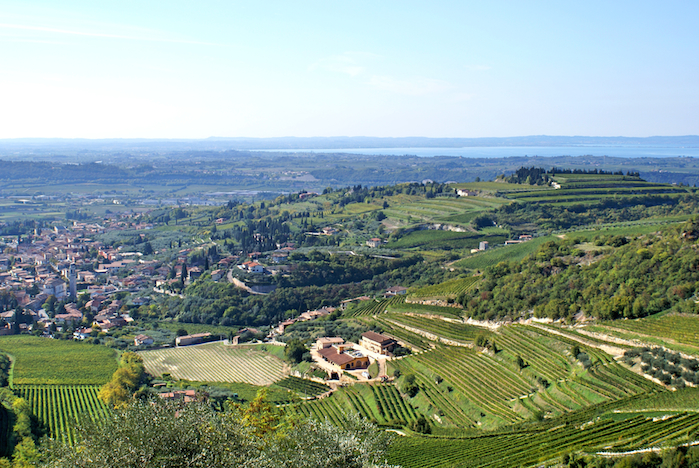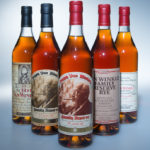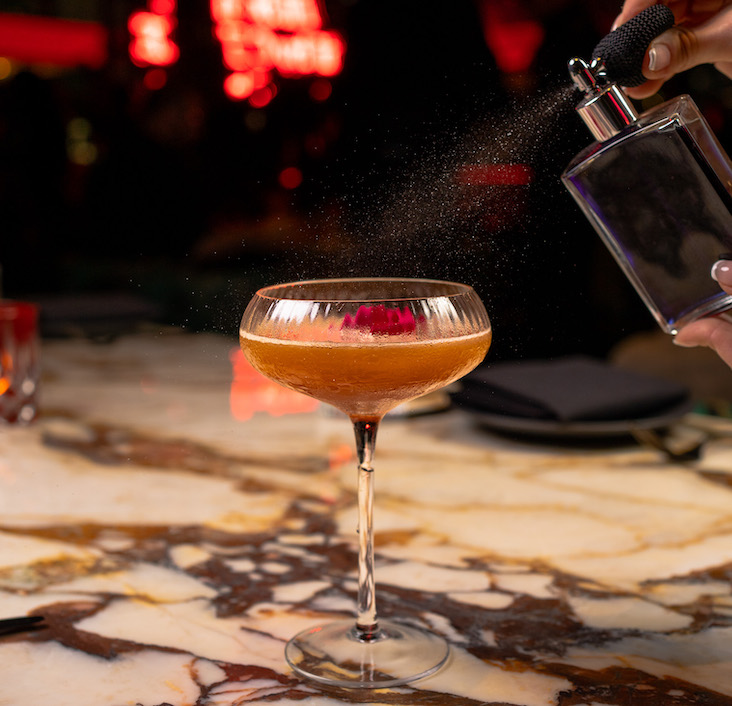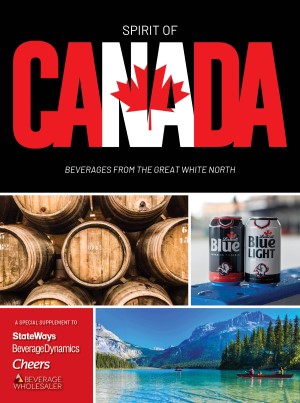The 2017 harvest for the Valpolicella wine region was challenging. Summers are growing hotter for this viticulture zone in Verona, Italy.
So says Andrea Sartori, president of Consortium for the Tutelage of Valpolicella DOC Wines and owner of Sartori Winery.
“We had a very long, dry, hot summer, which some people might think is good for the grapes,” he said during an Amarone della Valpolicella tasting this week at Black Barn Restaurant in NYC. “But that’s not necessarily true. It can affect the structures of wine and make for imbalance.”
The region also saw frost on the vines at the end of April, plus three hailstorms that occurred in short succession between April and September.

The region is best known for Amarone.
Nevertheless, Sartori remained bullish about the 2017 Valpolicella vintage.
The region is best known for Amarone della Valpolicella. This labor-intensive, premium-priced wine is made primarily from the region’s corvina and rarer corvinone varietals. Production entails extensive drying periods for the grapes after harvest. Protected by the region’s DOC classification, this “apassimento” method occurs one of two ways.
The traditional method is for grapes to dry on racks of straw mats for up to four months. More-modern producers will dry grapes quicker in rooms with controlled temperature and humidity. Afterwards, for either method, pressing and fermentation periods tend to be longer than normal. A variety of oak aging also follows both methods: everything from neutral grain to new oak.
The end result is an easy-drinking red with bold flavors of cherry candy, fig, plum, and cinnamon spice. A long and laborious production process does mean higher prices. But consumers eagerly buy up bottles from the 60 million produced annually by this region’s 2,286 growers across 7,844 hectares of vineyards.
After all, Amarone is for everyone.
“Amarone has such an easy, soft, round profile,” says Sartori. “There are no hard tannins. It’s not very austere. And there’s the typical cherry finish of Amarone. All this makes it an easy wine to approach, even for beginners.”
Many sommeliers believe that between seven and ten years is optimal for aging Amarone. Its bold flavors need time to mellow. A 2003 Amarone della Valpolicella poured during the tasting revealed the bright-but-restrained cherry and black-fruit flavors that shine with the oak fading wonderfully into the background.
Sartori had a different opinion.

The traditional method is for grapes to dry on racks of straw mats for up to four months.
“When people ask me how long they should age Amarone, I say, ‘Until Tuesday’,” he said with a laugh. “Seriously, this wine is good to go. Though of course, as some people prefer evolution in their wines, anything within four to five years I also believe is excellent. I’ve had Amarone that was 25-30 years old and it held together very well.”
Sartori believed that uncooperative weather would remain a challenge for Valpolicella.
“The harvest season has turned upside down the last ten years because of how much the weather has changed,” he said. “Especially the extremely hot summers. In 2017 that means we’re going to have to press the Amarone in the first week of December, if not earlier.”
“This weather issue is something new,” he added, “and it’s something we will have to manage moving forward.”
Kyle Swartz is managing editor of Beverage Dynamics magazine. Reach him at kswartz@epgmediallc.com or on Twitter @kswartzz. Read his recent piece 10 Beverage Trends to Watch in 2017-18.







